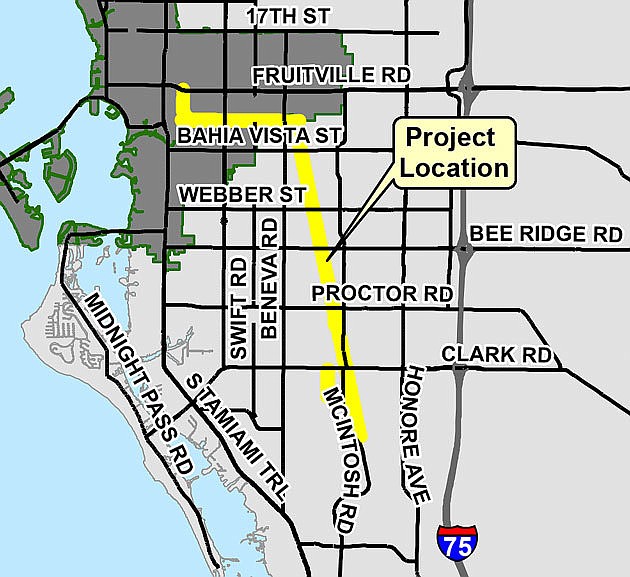- January 4, 2025
-
-
Loading

Loading

Spurred on by the popularity of Sarasota County’s Legacy Trail, the Sarasota County Commission didn’t hesitate Tuesday — of course not — to approve spending $38 million to acquire 119 more acres of unused railroad track and right of way to extend Legacy Trail from Culverhouse Park north to Fruitville Road.
The piece de resistance!
Or so it seems to the commissioners, and, of course, to the Friends of the Legacy Trail, one of the most active and influential lobbying groups in the county. This is one of the Friends’ dreams come true.
Apparently, Sarasotans at large feel likewise. Polling shows 70% approval for the trail, according to reports provided to commissioners.
Of course it’s popular!
Ask anyone if an 18-mile, free-to-users bike trail would be a great community asset, instead of unused railroad tracks, and what do you think people are going to say?
Ask the golfers who use the city’s Bobby Jones Golf Club if they want taxpayers to fund a $15 million renovation of the courses, and what do you think they’ll say?
Perhaps Sarasota County taxpayers might feel differently, however, with more perspective.
When the commission voted to acquire those additional 119 acres Tuesday, it also voted to put on the November 2018 general election ballot a bond referendum for $65 million.
That’s the amount of money needed to purchase the additional unused track and then convert it to a bike and walking trail. Sarasota County voters will be asked to increase their property taxes to fund the $4 million annual debt service.
According to county staffers, servicing the bond debt would result in a millage increase of 0.07 mills, or $14 a year on $200,000 of taxable value.
That doesn’t sound like much. But if your home is valued at, say, $2 million, that additional eight miles of bike trail would cost you $140 more a year. At $500,000 taxable value, you would pay $35 a year. Or, say, if you’re FCCI Insurance Group, you’d be paying $1,626 more a year for eight more miles of additional bike trail.
Here’s more perspective: Based on county records, that $65 million bond referendum would push taxpayers’ total investment in the Legacy Trail to $102 million.
A $102 million bike trail.
That’s some Legacy, all right.
Now we fully expect to hear from the trail’s defenders. They’ll tell us what the commissioners heard Tuesday: that the trail is a great tourist attraction, great for residents and that it attracts 175,000 users a year. (Keep in mind, as noted in the box below, that number does not describe unique, individual users. No one knows the real number of unique users.)
Nonetheless, the $102 million is an extraordinary amount, especially juxtaposed against the plethora of other county needs. Make your own list:
• Road and traffic management improvements
• Anti-flooding improvements
• Public safety protection
• Water-sewer maintenance
That’s just the beginning.
On top of the above, commissioners also are on their way to levying on unincorporated property owners a 5% tax on electricity, water and gas in an effort to build up the county’s reserve funds.
It is still a long way from the November 2018 elections. A lot can change between now and then. But you can expect this for sure: The Friends of Legacy Trail will conduct a vigorous campaign for voter support for the $65 million bond referendum.
We can’t argue with their view that the Legacy Trail is a great asset. But it’s also similar to beach parking. We contend beach users should help defray the cost of maintaining the beach by paying for beach parking. Legacy Trail users should pay to use the trail as well.
That would be a start. But we still have a hard time understanding how to justify taxpayers footing a $102 million “want” amid the county’s other “needs.”